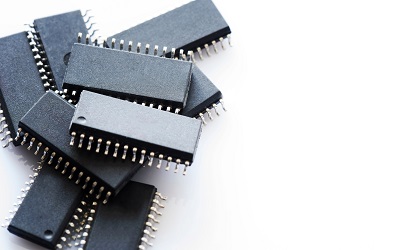Editor’s note: This is the first of two parts.
If one industry is significantly aware of the new normal, it’s the electronics industry. The pandemic hit the global supply chain of electronics from materials to manufacturing, from basic building blocks such as wafers to the entire manufacturing cycle of components and final products.

Pablo Valerio
Now, as the world comes out of the last two years of living with the virus and its impact, new geopolitical conflicts threaten to disrupt the path to recovery even more than Covid-19.
While the pandemic has been challenging, most technology companies continued operations, research, and manufacturing. The chip shortage impacted most products’ delivery but fueled investments in new facilities and processes to a level never seen before.
Sanctions enacted by the European Union and the United States affect many operations, including purchasing raw materials and components, significant transportation lines, cost of fuel, financial markets, and trading in several regions, including China and Eastern Europe. It has a substantial impact on all markets and sectors, including electronics.
The chip shortage is expected to continue for the foreseeable future
Last month, German chipmaker Infineon raised its forecast for revenues, underlining the German group’s status as one of the winners from the global shortage of semiconductors.
At the time, the company also warned that Covid-19 risks remained and that if China were to implement further lockdowns, it could harm Infineon’s contractors and have a knock-on effect on its own production.
The current semiconductor shortage has hit the automotive industry hard, and one of the factors is the pandemic itself. General Motors and Ford alone have warned that they could take a collective $4.5 billion hit to their earnings this year because of the part shortage.

Last November, at the WebSummit in Lisbon, Arm’s then-CEO, Simon Segars, gave a keynote address explaining the main reasons for the chip shortage. He mostly blamed a mismatch in supply and demand at the time due to the pandemic. He argued that moving chip production to computers, game consoles, and other home devices created a bottleneck for the other OEMs.
He is optimistic that current and future investments will ease the supply chain in the short term but also cautious about not creating huge expectations. “About $2 billion a week is going to be spent for the next couple of years to add capacity and build new facilities, and that’s going to add about 50 percent additional capacity over the next five years,” he said.
The problem, he argued, was where to add capacity. “There’s a whole ecosystem that sits around these materials, lots of chemicals — virtually the whole periodic table that is used in making semiconductors. You need industrial style, very pure chemicals to feed into these factories downstream. You need to test them, package them, ship them. So you need much more than just a chip factory to address these supply chain issues.”
Fast-forward to today as the disruption of the supply chain is getting more severe. Several world regions are affected by local and global conflicts and trade sanctions. Those conflicts have severe repercussions in international markets.
Without addressing the entire supply of materials and components, from the basic chemicals and raw materials to boards and chipsets, the current product shortage could continue for years.
Reshoring would not solve global supply challenges alone
Back in 2010, the late Andy Grove, former Intel CEO, wrote in Businessweek: “American companies discovered that they could have their manufacturing and even their engineering done more cheaply overseas. When they did so, margins improved. Management was happy, and so were stockholders. Growth continued, even more profitably. But the job machine began sputtering.”
After decades of moving to manufacture overseas and increasing the dependence on Asia and other regions for manufacturing, the United States and the European Union want to reverse the previous trend and move to manufacture back home.
Both the European Commission and the Biden administration are pouring billions of dollars and euros into companies that want to invest in manufacturing at home. Recently, during the State of the Union session, Intel CEO Pat Gelsinger received a standing ovation for his company’s commitment to creating new semiconductor factories on U.S. soil.
Building more factories and creating jobs at home will not solve the need for materials and specialized components from abroad, especially in the short term. Asian companies are leaders in key components such as LCDs, injection molding (a result of the massive investment in toy manufacturing in China), lithium-ion batteries, wireless cards, controller boards, and flex circuitry with their own products, and nobody today can compete with them.
In Part 2, the author takes a deep dive into materials supplies.


